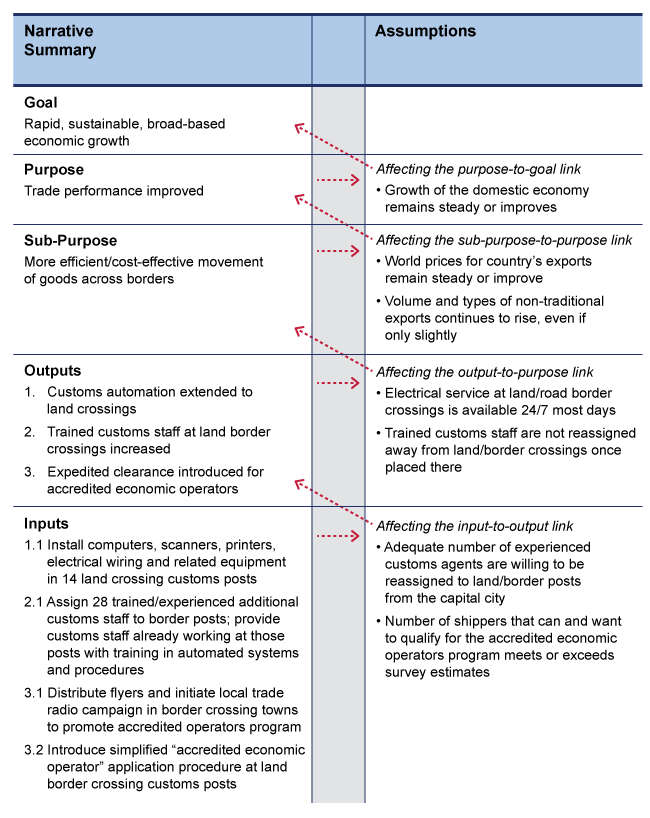Speeches Shim
|
The graphic representation below illustrates how a Logical Framework captures the necessary and sufficient conditions for project success.
Reading Narrative Summary and Assumptions columns together makes the thinking behind a project design more precise. It shows that what a design team is saying, for example, is that:
Assumptions are design uncertainties and thus sources of risk. An analysis of the likelihood that a set of assumptions will prove valid is as important during project design as it is for the development of a CDCS. For this reason, project design teams may wish to consider undertaking a risk analysis of project assumptions using guidelines and a template provided for doing so: Start with a review of the kit page on Identifying Risky Assumptions, then consider carrying out a risk analysis using the kit’s Project Assumptions Analysis Template. |
Assumptions reflect our recognition that there are factors beyond our control that are necessary for successful achievement of objectives at all levels of the project. The project design team must do its best to identify and assess critical assumptions. Major assumptions, risks, and contingencies should be assessed with project feasibility in mind.
In an Objective Tree, "if-then" hypotheses are show as a hierarchy that leads from Outputs to a Project's Goal. This hierarchy is incorporated into a Logical Framework's Narrative Summary column. While the reasoning in this first column of a Logical Framework captures key elements of what is necessary to achieve an important set of results, this picture is often incomplete.
Beyond a chain of intended results lies a set of conditions about which designers make assumptions that must also be valid for project results to be achieved. The Logical Framework demands transparency about these other factors. The matrix calls for their disclosure at every level of a results hierarchy, so that it is clear what risks might exist with respect to achieving a project's Purpose. The Assumptions column at the far right of a Logical Framework matrix documents these other factors. Together, the Narrative Summary and Assumptions columns of a Logical Framework tell us what the necessary and sufficient conditions are for success.
In the table below, the Narrative Summary of project hypotheses and results for a trade facilitation project is shown next to assumptions that a design team might have made for this project. The figure brings together the far left and right columns of a Logical Framework matrix as if the middle columns had been folded away to display bones of the project's design logic clearly. Arrows on the diagram illustrate how these two columns are to be read.

| << LF Narrative Summary | Up | Project Assumptions Risk Analysis Template (Optional) >> |
ProjectStarterBETTER PROJECTS THROUGH IMPROVED |
A toolkit developed and implemented by: For more information, please contact Paul Fekete. |


Comment
Make a general inquiry or suggest an improvement.